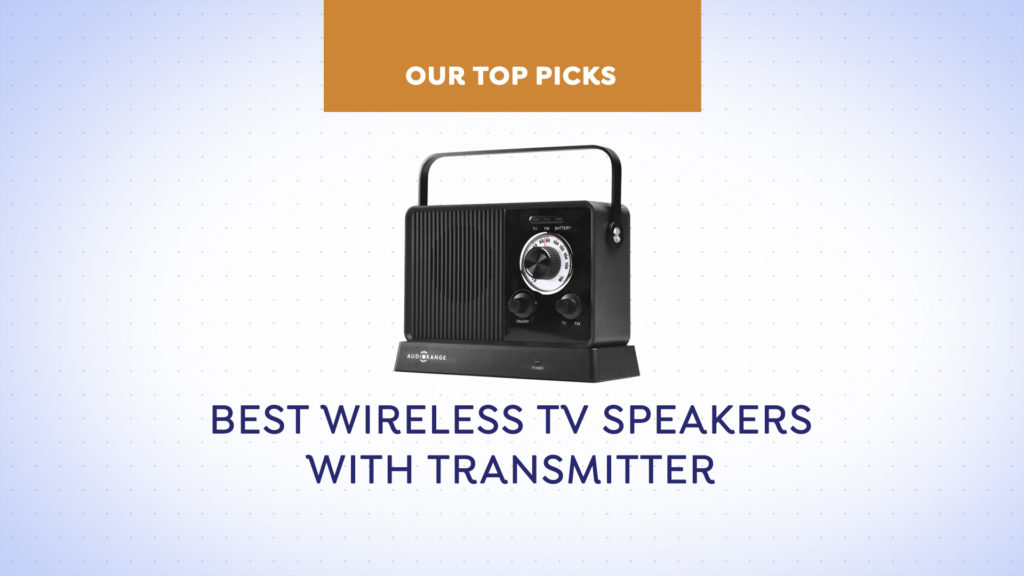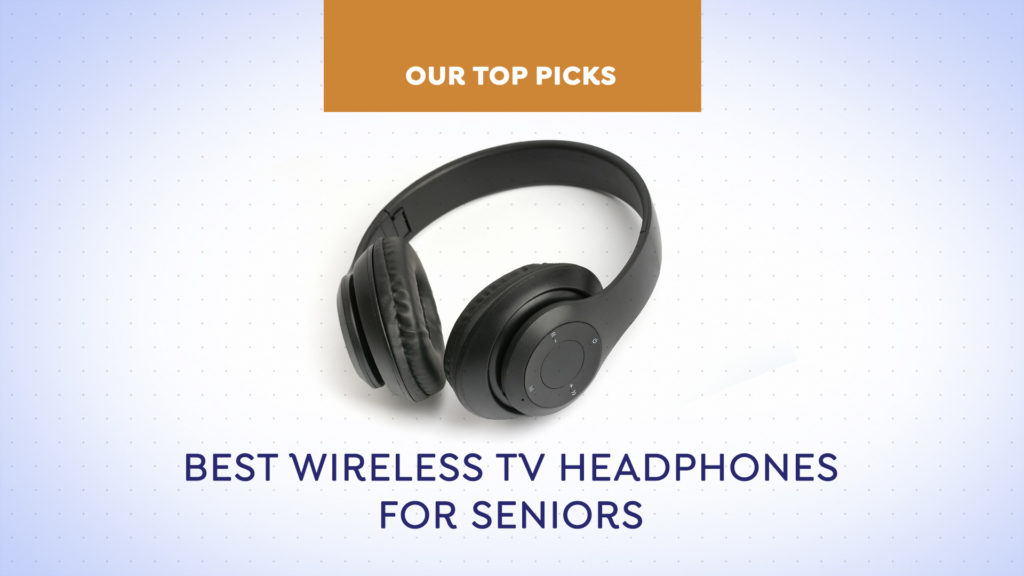
Some of the links on this page may link to our affiliates. Learn more about our ad policies.
Best TV Listening Devices For the Hard of Hearing
Updated on: February 2023
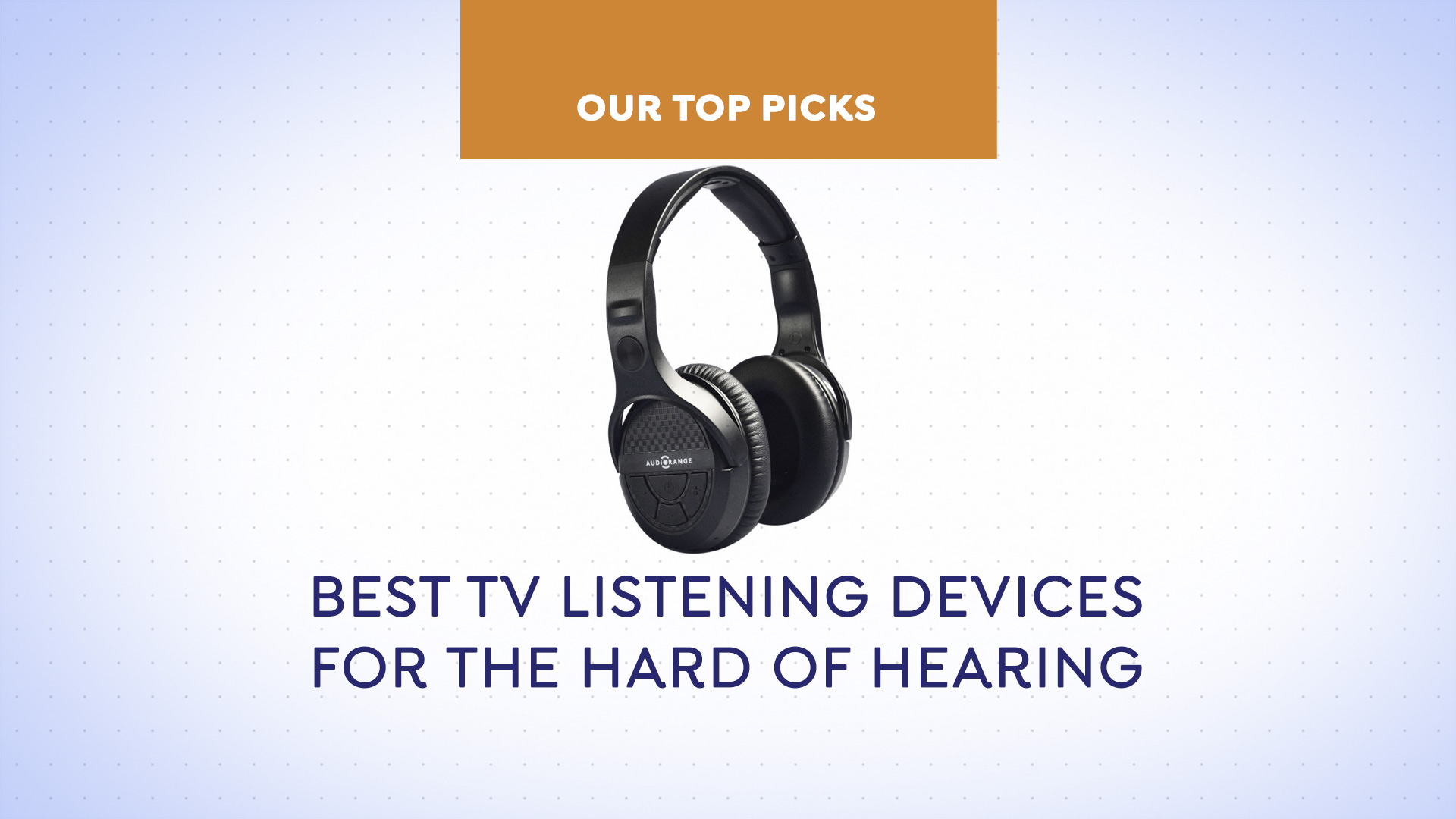
Best Wireless TV Headphones
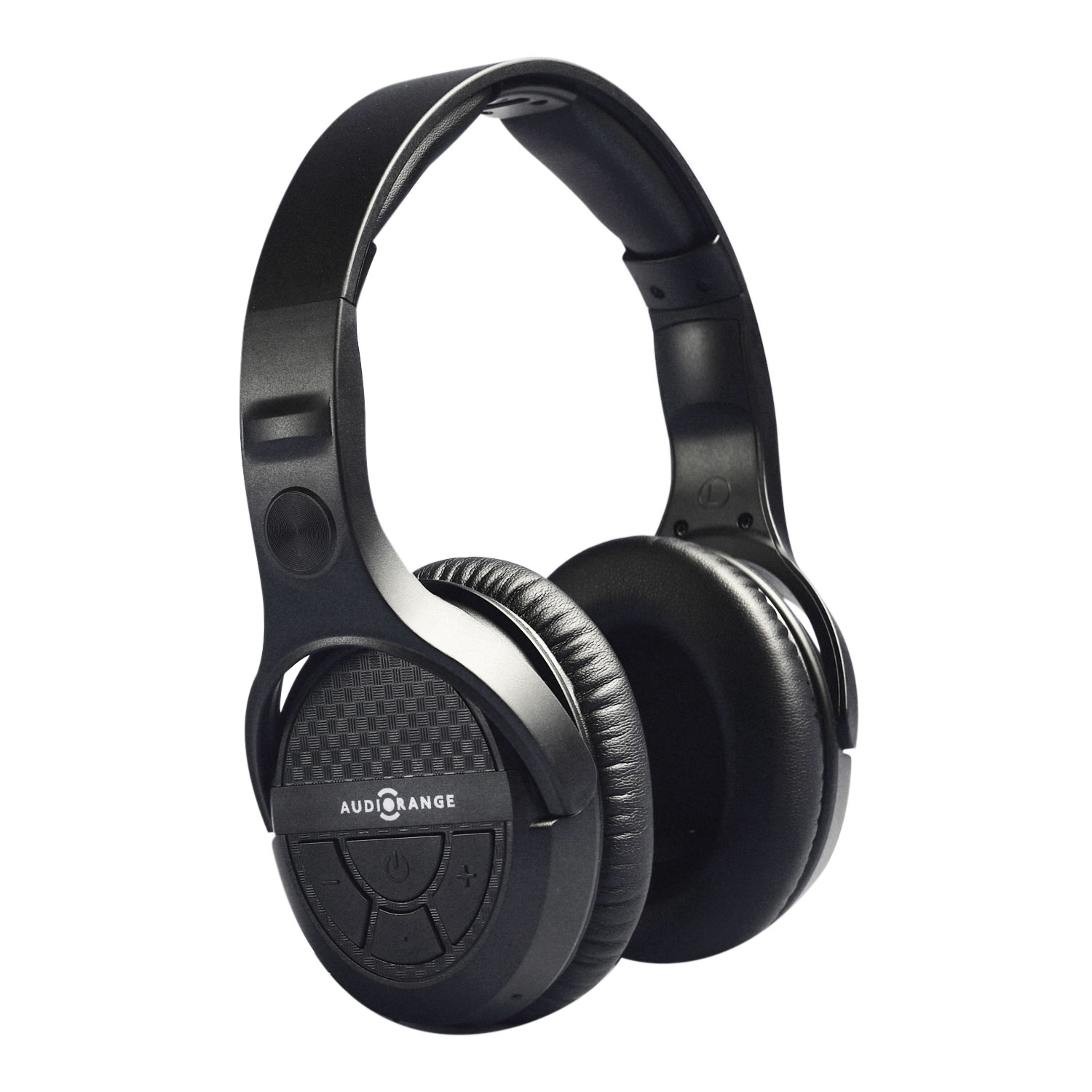
AudioRange OTE-1000 Wireless TV Headphones
Best Loop System
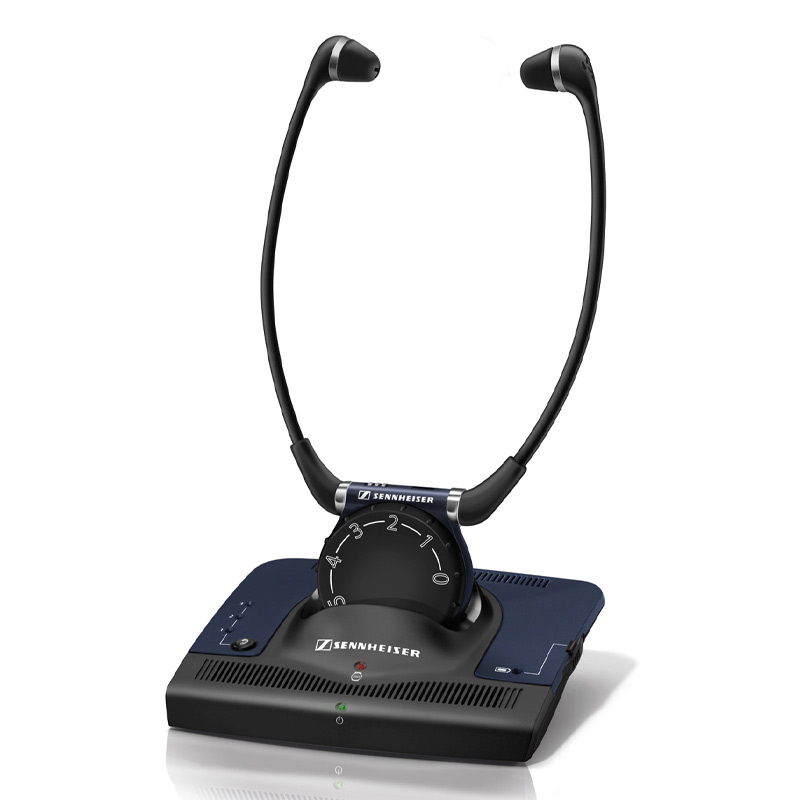
Sennheiser SET840-S Wireless System
Best Wireless TV Speaker
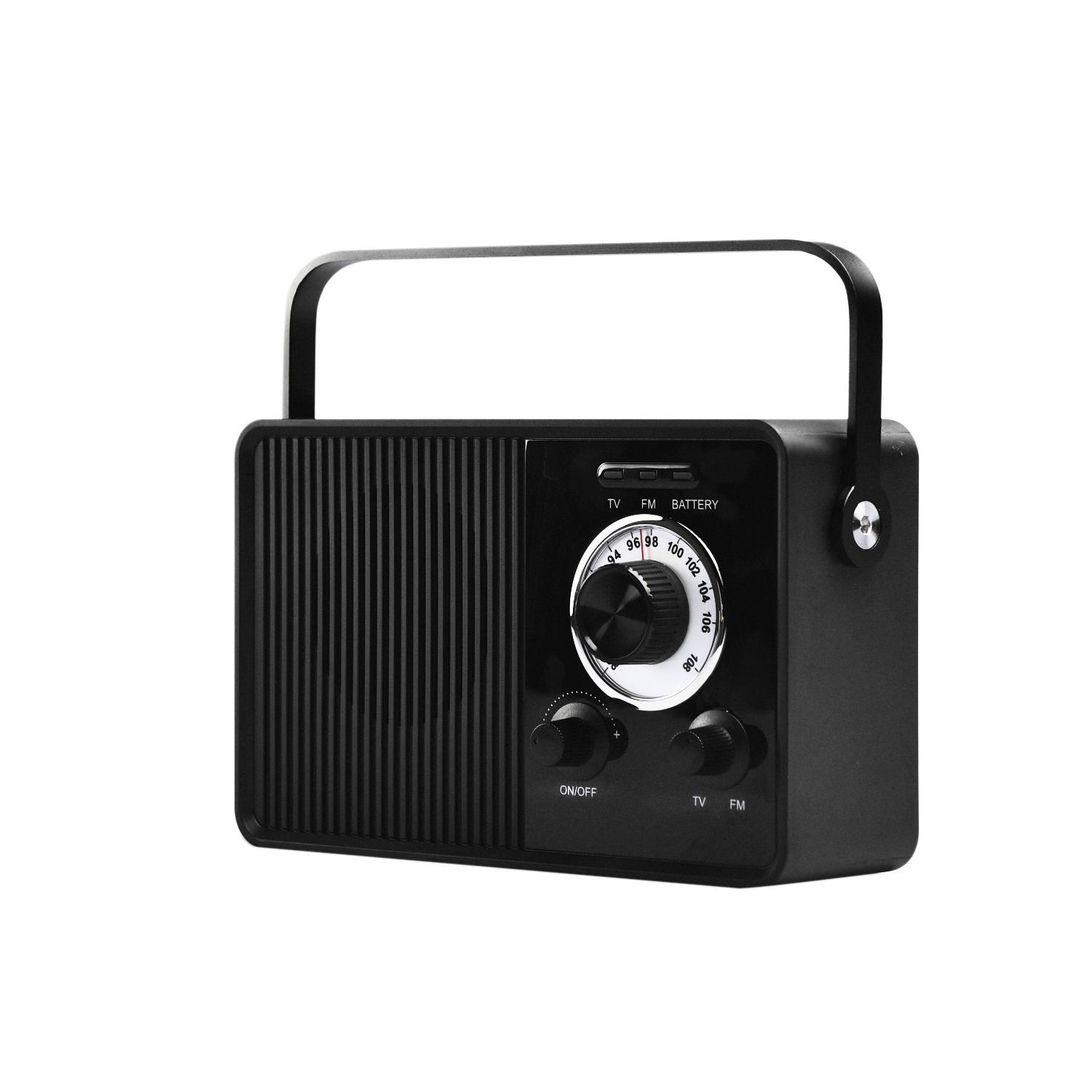
AudioRange SPK-1000FM Wireless TV Speaker
Age-related hearing loss is common for most seniors. The National Institutes of Health reports that nearly 29 million people in the United States could benefit from hearing aids – so if you’ve noticed a decline in your ability to hear well, you’re definitely not alone. For most of us, some level of hearing impairment occurs gradually as we age and can make communication and day to day activites difficult. Sometimes the inability to hear well causes seniors to withdraw from socializing with friends or doing what they enjoy. Struggling to hear the TV is often one of the first signs you many need to evaluate your hearing.
If you find yourself continuing to turn up the volume, arguing with your spouse or family about the right volume level, or continually asking what was said – a TV listening device may be the solution you need and worth investigating. There are several different types of TV listening devices to choose from – everything from headphones to soundbars to personal speakers. All are designed to help amplify your television’s audio and improve sound clarity. Because there are many options on the market, figuring out what will work best for your level of hearing loss and lifestyle is an important first step.
Find What You Need
Top TV Listening Devices at a Glance
Types of TV Listening Devices
Even if you have a slight hearing loss, a TV listening device can help. There are several options to choose from – everything from stationary soundbars to wearable speakers. When you’re trying to decide what to buy, the most important things to take into consideration are the severity of your hearing loss, your budget and what’s most comfortable to wear and easiest to use for you.
Wireless TV Headphones
Wireless headphones come in two different options – one is what you might consider a traditional headphone where the ear cushion fits over your ear. The other type is an earbud that fits inside your ear similar to the way a hearing aid does. Wireless headphones allow you to personally adjust the TV to the volume you prefer, while not changing the volume for anyone who might be watching with you.
Wireless TV Speakers
Wireless TV speakers have a transmitter base that connects to your TV. It uses a radio frequency to send audio wirelessly from the TV to the speaker. The speakers are generally small and portable so you can carry them with you when you get up and move around the room and house. Some wireless TV speakers are light enough they can even be worn around your neck.
Loop Systems
Loop systems are also referred to as an ‘audio induction’ loop. It’s a magnetic field that’s placed around the room or in a loop you wear around your neck. It connects to the TV’s audio output or picks up the sound coming from the speakers and uses the telecoil setting of your hearing aids to transmit the audio from the TV. Your hearing aids don’t need to be wireless to use a loop system, they just need to be telecoil compatible.
Soundbars
Soundbars are long, rectangle speakers that are positioned just above or below the TV. They can also be mounted on the wall. They are built with multiple speakers inside and connect to the TV to help amplify the audio coming from your set. Some soundbars even give you the movie theater experience by simulating surround-sound.
Personal Sound Amplifiers
As the name implies, personal sound amplifiers amplify sound while cutting out background noise. They generally come in a small, portable case with a microphone attached. You place the microphone near the TV and it sends amplified sound to your headphones. Personal sound amplifiers also work well for one-on-one conversations.
Improving TV Sound for the Hearing Impaired
If you’re having a hard time hearing the television, the first and best thing you can do is have your hearing checked by an audiologist or another specialist. A hearing test – which determines how loud sounds need to be for you to hear them – will help you know the degree of hearing loss you may have and help you devise a plan to treat it.
Hearing aids can solve a lot of our hearing problems, but sometimes we need extra help to make sure we hear the TV as well as possible. Continuing to turn up the volume isn’t a good option. The louder the TV, the more distorted the sound will become which makes it even harder to hear. Turning up the sound can also cause arguments with our spouse and family. If you’ve been asked more than once, “Will you turn that down?”, you may need a TV listening device.
Hearing loss is a normal part of life. That’s because as we age, we are more likely to pick up the lower end of frequency ranges and while having trouble hearing the higher ends. That’s why background music can seem like it’s louder than the voice of the person speaking on TV. Sometimes, tweaking the audio settings on the television can help. You can change your sound mode, turn down the bass, increase the treble and turn off audio enhancements. It may take some experimenting to determine which is most beneficial.
If a hearing aid and adjusting the audio settings still haven’t solved your problem, then a TV listening device can definitely be of help. As mentioned, there are different types. Choosing one usually comes down to need and preference – and, of course, budget. Some listening devices will amplify the sound for you and everyone else in the room so you can hear it above all the other noise. Others are designed to enhance the sound of your favorite show or program and allow you to watch at the specific sound you need to hear without bothering anyone else.
Best TV Listening Devices
There are so many options on the market it can be hard to figure out which one is the best and what is worth the money. Through unbiased research and testing, as well as hours of reading online product and customer reviews, we have compiled what we believe is the list of the best TV listening devices in all categories.
We evaluated products based on how easy they are to use and set up, battery longevity, and cost. We also looked at what the devices paired with, what came in the box and how well it improved sound quality with or without hearing aids. Overall, our choices were made with the mindset of what makes TV watching easier for anyone with hearing loss and what helps increase the possibility of independent living.
Featured Reviews
- Best Wireless TV Headphones – AudioRange OTE-1000 Wireless TV Headphones
- Best Soundbar – ZVOX AccuVoice AV157
- Best Personal Sound Amplifier – Pocketalker Ultra
- Best Loop System – Sennheiser SET840-S Wireless Assistive Listening System
- Best Wearable Speaker – Torus NB05 Bluetooth Wearable Speaker
- Best Wireless TV Speaker – AudioRange SPK-1000FM
AudioRange OTE-1000
AudioRange OTE-1000 Wireless TV Headphones
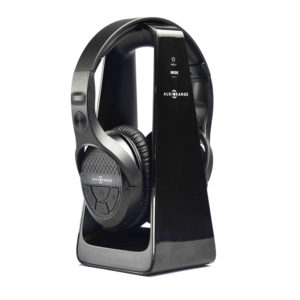
- Lighter than many other headphones
- One-Year Limited Warranty
- No Pairing Required
- No Lip Sync Delay
- Easy To Follow Instructions
The AudioRange OTE-1000 Wireless TV Headphones are a great option for anyone who prefers the traditional headphone set. The OTE-1000 has an adjustable band that fits across the top of your head and the ear cushions cover your ears. Wireless headphones allow you to adjust the volume for your own personal preference. It doesn’t matter how low the volume is on the TV – it can even be muted. The sound coming through your headphones can only be heard by you at the volume you want.
These buttons are made with the elderly in mind and are easy to locate and press. The lightweight design of these headphones also minimizes neck and shoulder pain.
The headphones cost around $109.99 and are compatible with nearly all TV brands, as well as all streaming services and devices. They are easy to set up and easy to use. Everything you need to operate the OTE-1000 is included in the box. The headphones are wireless, use a rechargeable battery, and can operate for up to 10 hours on a single charge. It’s easy to move about with the OTE-1000. It has a wireless range of up to 100 feet inside your home – so you can sit on the couch or cook dinner and still be able to watch your favorite show.
The OTE-1000 is compatible with hearing aids, although you can use the device without them. If you have a pacemaker, you should check with your doctor first to make sure the frequency the headphones use is compatible with your device.
ZVOX Accuvoice
ZVOX Accuvoice AV157 TV Speaker
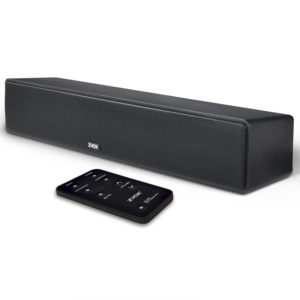
- Remote Control With Large Buttons
- Twelve Levels Of Voice Boost
- Contains Three High-Output, Full-Range Speakers
- 60-Day Trial
- Free Shipping
- Free Lifetime Tech Support
- Warranty Must Be Purchased
The ZVOX AV157 is a small soundbar that can be placed above or below, to the left or the right of your television. Soundbars are equipped with multiple speakers inside to help improve the quality of your TV audio. The AccuVoice AV157 uses patent-pending technology to boost the sound from your TV. It works much like hearing aids do – by boosting voices while canceling out background noises.
The AV155 is easy to install, works with most remote controls and has six levels of voice boost to make it easier for you to hear the TV. The soundbar costs around $300 and comes with everything you need to operate it. Once it’s plugged in, you will only need to connect one wire to your television. The sound that comes from the AccuVocie AV157 is high quality and crystal clear.
Since it’s a speaker that connects to your television and has to sit near it, it may be best suited for someone who already has hearing aids or who only has mild hearing loss.
PocketTalker
PocketTalker Ultra
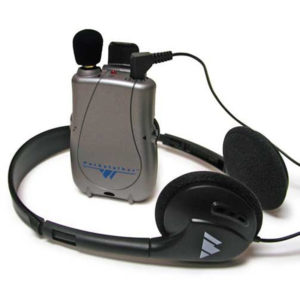
- Five-Warranty For Parts And Labor
- 200 Hours Of Battery Life
- Impact-Resistant Case
- Belt Clip For Easy Transport
- Lightweight
- Lanyard For Easy Transport
The battery-operated Pocketalker Ultra is a sound amplifier. The small, lightweight microphone case is placed near the TV and amplifies the sound to an earpiece or set of headphones (which must be purchased separately) to help you hear what’s being said more clearly. The Pocketalker Ultra costs around $170 and runs off two disposable AAA batteries, which are included.
The Pocketalker Ultra is portable, so it can be used for television viewing, one on one conversations, in the car or anywhere else you need to amplify voices and drown out background noise. Just place the microphone near the sound and turn the volume up or down, depending on what your hearing needs are at the time. The sound amplifier is compatible with or without hearing aids, but is probably best suited for someone who has mild to moderate hearing loss.
Sennheiser SET840-S
Sennheiser SET840-S Wireless Assistive Listening System
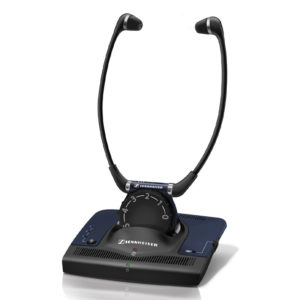
- Two-Year Warranty
- Three Hearing Settings
- Spare Battery Charging Compartment
- Volume Can Be Set Separately For Right And Left Ear
- Large, Easy To Read Volume Control
The Sennheiser SET840-S is a listening device that comes with a loop you wear around your neck. The receiver and neck loop work together to amplify the sound from the television to help you hear what’s being said. The SET840-S costs around $300 and runs on a rechargeable, lithium-ion battery that can last for up to nine hours on a single charge. The device is best suited for anyone who already wears hearing aids.
You don’t have to sit in front of the TV to enjoy the high-quality sound the SET840-S provides. You can move freely about your home with the neck loop on and not miss any of your favorite show or program. The range is up to 100 feet and it runs off of radio frequency technology, so you don’t have to be in sight of the transmitter base for it to work properly.
Torus NB05
Torus NB05 Bluetooth Wearable Speaker
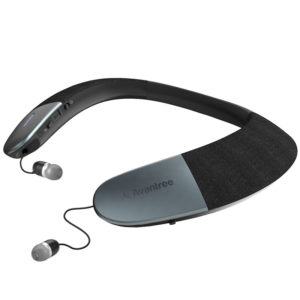
- No Lip Sync Delay
- Built-In Retractable Earbuds
- Voice Assistant
- USB Charging Capability
- High-Definition Sound Quality
- One-Year Warranty
The Torus NB05 Wearable Speaker sits comfortably around your neck and utilizes Bluetooth technology to deliver high-quality, 3D surround sound. The lightweight speaker runs around $90 and will last up to eight hours on a full charge. In order for the speaker to work with your TV, you will have to purchase an Avantree transmitter separately. The cost for those runs between $60 and $100.
The NB05 is easy to set up. It has a voice assistant that tells you what to do and if things are working correctly. The speaker can be paired with your smartphone to allow you to listen to music or even use the built-in earbuds to take a phone call. Depending on the transmitter you choose for TV watching, you can roam freely around your home without any interference or disruption in sound quality.
The NB05 can be used with or without hearing aids. It’s a lightweight, easy to wear, long-lasting, high-quality speaker, but its main purpose is to pair with a smartphone, so it may not be the best choice if your main use will be for the television.
AudioRange SPK-1000FM
AudioRange SPK-1000FM Wireless TV Radio
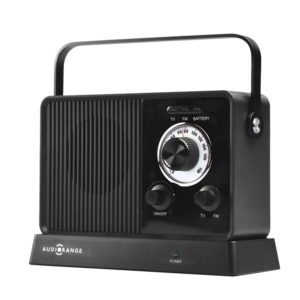
- Listen to the TV and the Radio
- Limited Lifetime Warranty
- Can Be Paired With Up To 50 Other Speakers
- Automatic Battery Power Conservation
- No Lip Sync Delay
The AudioRange SPK-1000FM Speaker uses a radio frequency to transmit audio wirelessly from the TV to the speaker. A transmitter base connects to your TV and sends audio wirelessly to your speaker, with no lip sync delay. The speaker is portable so it can be moved and placed wherever you would like. The speaker base and speaker don’t have to be in the same room to work, so you can move freely about your home while listening to your favorite program or show.
The SPK-1000FM costs around $119.99, comes with a rechargeable battery, and can operate up to eight hours on a single charge and will automatically conserve battery power when running low. The second power adapter included will allow you to charge the speaker from the dock or any other convenient location. It’s compatible with most TV brands and comes with everything you need to be included in the box. The speaker is wireless and will transmit audio within 100 feet of the base.
The speaker will work well with hearing aids, but if you have a pacemaker, you should check with your doctor first to make sure the speaker frequency won’t interfere with your device.
Other Options To Consider
Hearing Aids With Bluetooth Connectivity
Hearing aids have definitely gone high tech. If you are in need of hearing aids for the first time, or it’s time to replace your older ones, you may want to consider hearing aids with built-in Bluetooth connectivity. These hearing aids can pick up sound from digital devices. You can connect a Bluetooth streaming box to your TV that transmits sound directly to your hearing aids when you are in range. It’s important to make sure you have a TV with Bluetooth capability so it will work with the hearing aids.
Closed Captioning
If you find yourself missing a word or two here or there, or you are close to or have total hearing loss – closed captioning may be the best option for you. Closed captioning is where the words being said are shown on the screen in real time. Most TVs offer the option of turning on closed captioning.
Smartphone Or Tablet App
Yes – there’s an app for that. There is now an app, called Chatable, that can be downloaded on your smartphone or tablet that will basically turn them into a TV listening device by cutting out background noise and amplifying the voices on your TV. It will also work with one-on-one conversations. You’ll need a set of earbuds or headphones that work with your smartphone or tablet for the app to work correctly. Chatable can be downloaded for free for Apple or Androids, but it will cost you about $13 a month to use.
FAQS
Despite new hearing aid and app technology, for most people, a TV listening device is the best option to help return the enjoyment of watching TV. But before you buy one there are some important factors to consider:
-
Is My TV Listening Device Compatible with my TV?
Before you invest in any TV listening device, it’s important to know if it will work with your specific television set. Most devices plug into the audio inputs of your TV. You should be able to find the list of brands or products they pair with on their websites. So, it’s best to check before you buy. The last thing you want is a listening device you can’t use.
-
How Is The Device Powered?
Many TV listening devices have rechargeable batteries, others have to be plugged into a wall outlet to work. Some will just work with regular batteries. The outside packaging or the website description is a good place to find that information. If it runs on regular or rechargeable batteries, it’s important to know how long the battery life is. If you are someone who enjoys watching a few hours of television a day, you don’t want the batteries to run out and need to be recharged or replaced before your program ends. And if it plugs into the wall, you want to make sure the cord is long enough to reach where you need it to but also short enough to keep from being a tripping hazard.
-
Can I Use It While I’m Moving Around?
If you’re someone who likes to move around and do other things while you are watching TV, then you’ll want to make sure the listening device you choose is portable. Most of them have a particular range they will work in. A device that uses a radio frequency to transmit is easier to use when going from room to room without interruption.
-
Is My Listening Device Easy to Set Up?
It doesn’t seem quite right if something designed to make your life easier is hard to install. Fortunately, most TV listening devices come with easy, step by step instructions that allow you to set it up without professional help. There generally aren’t many parts in the box, and usually the most difficult part of the process is finding the audio inputs and outputs on the back of your television.
-
Is My Listening Device Easy to Use?
Again – what’s the point if it isn’t easy to use? Most TV listening devices are designed to make it as easy as possible to listen to your favorite show or program. On the device you choose, you’ll want to make sure the controls are easy to find, see and adjust.
-
Will It Work With My Hearing Aids?
The easiest answer to this question is – it depends. Many of the listening devices on the market are compatible with hearing aids. If you’re looking at one that comes with earbuds – you’ll have to remove your hearing aids to use it. Depending on your severity of hearing loss, you may want to go with a traditional headphone instead so you can use your hearing aids with it.
-
What’s The Best Choice For My Living Situation?
If you live alone, any TV listening device will work. But if you watch TV with your spouse or family or live in an assisted living facility where you watch with others, you will want to consider a wearable device where you control your own volume and can cancel out any background noises.
-
Can I Take Them With Me When I Travel?
If you’re on the go and traveling a lot, then you want something that’s easy to unhook, pack and take with you. Most TV listening devices are small enough to be travel ready. A soundbar may be harder to take with you because of its size.
Conclusion
Sometimes, instead of getting help we just give up. But that doesn’t have to be the case. As we age, we all experience hearing loss. And whether it’s not being able to hear your loved one or your favorite TV show, there are ways to solve the problem.
You don’t have to continue to miss chunks of dialogue or ask your spouse or family member, “What did they say?” TV listening devices are worth the investment because they are designed to help you regain the independence of watching TV and being able to enjoy it again.
